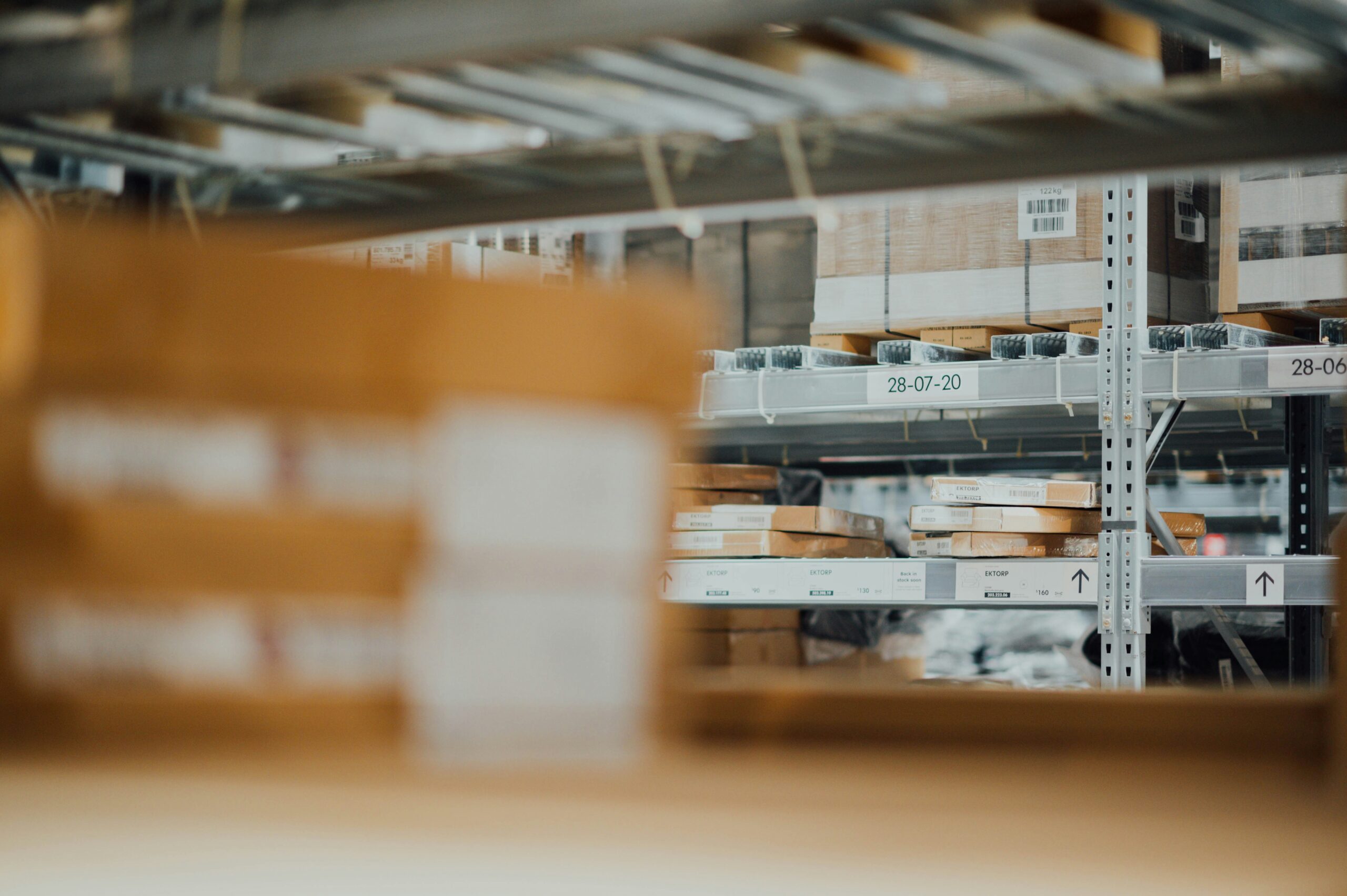What are the largest product categories in German e-commerce? Why they win?
Written by
Kinga EdwardsPublished on
Discover the biggest product categories in German e-commerce and learn why they dominate the market. Uncover the secrets to their success today!

Germany’s online shopping scene in 2025 feels like a busy market — only it’s open 24/7, fits in your pocket, and ships straight to your door. Scroll, click, done. From the latest phone upgrade to artisan chocolate, it’s all there, waiting for you.
But behind the smooth checkouts and sleek product pages, there’s a fierce battle for attention.
Some product categories barely get noticed, while others dominate shopping carts week after week. The winners? They’ve cracked the code on what German shoppers actually want — and how to keep them coming back.
In this guide, we’re unpacking the top categories in German e-commerce right now. You’ll see why they lead, what they’re doing differently, and what their success can teach other sellers. After reading this article, you’ll leave knowing exactly where the action is in 2025.
Why German e-commerce is a market worth watching
Let’s start with some basics.
Germany’s e‑commerce game is booming. The market is expected to cross €92.4 billion in e‑commerce sales in 2025, growing around 4 % year‑on‑year. That’s a marked rebound from 2024’s €80.6 billion, which itself was notable as the first increase after years of stagnation.
Roughly 66.44 % of Germans are forecasted to be e‑commerce users this year. That’s more than two in three people actively buying online — a massive base to serve. Here, mobile shopping continues to dominate. It’s not surprising, as after all, in 2025, over 65 % of internet traffic in Germany comes from mobile devices. This means seamless apps, quick checkout flows, and push‑friendly experiences pay off big time.
Plus, marketplace platforms are where the action is — 57 % of German online sales happen via marketplace channels like Amazon, Zalando, and Otto. Amazon.de alone holds a staggering 46 % market share in e‑commerce sales.
Fast‑moving consumer goods (groceries, personal care, cosmetics) are seeing strong growth in this area. FMCG grew 7.3 % in 2024 and remains the fastest‑growing segment. Meanwhile, fashion & accessories still lead in sales volume
In addition, a second‑hand boom is unfolding too. Re-commerce revenue was expected to grow to €120 billion by 2025.
As you can see, a lot is happening. Germany’s e-commerce scene is vibrant and full of opportunity. It sounds like the perfect backdrop to explore the leading product categories next.
How the most popular product categories in Germany gain dominance online
Some product categories seem to win without even trying. But there’s always a strategy behind the success — even if it looks effortless from the outside. Here’s what really pushes them to the top.
Consumer demand patterns.
Some products sell in steady waves all year. Others spike like crazy during certain seasons. Fashion sees its biggest pushes during new-season drops, while toys explode in December. The strongest categories know their rhythm and plan stock, marketing, and pricing around it.
Pricing competitiveness and brand presence.
If your product is everywhere but always priced higher, you’ll struggle. Winning categories often balance competitive prices with strong brand recognition. A trusted electronics brand, for example, can hold its price and still sell — because buyers believe in its quality.
Marketing and platform dominance.
On marketplaces like Amazon, Otto, or Zalando, visibility is currency. Categories that own top search spots, star in homepage banners, or run constant sponsored campaigns stay in front of shoppers. The more you’re seen, the more you’re bought.
Cross-border shopping behavior.
German consumers love quality imports — from Italian coffee makers to Japanese skincare. Categories that tap into cross-border demand often have an edge, especially when they combine local service with global appeal.
Put simply: dominance comes from timing, trust, and being where shoppers already are.
The top categories in German e-commerce
Let’s break the most popular product categories in Germany down — what they include, how they win, and who’s doing it best, according to ECDB data:
Source: ECDB, the Largest Product Categories in German eCommerce ranking
Apparel – style meets practicality
With $20,099.9m in e-commerce revenue and a 3.2 % share of total German e-commerce, apparel takes the top spot. The category’s strength lies in year-round relevance — winter coats, summer dresses, and everything in between.
Clothing in Germany is a blend of personal style, comfort, and value. This category spans fast-fashion staples to luxury pieces, and both ends perform well when the experience matches the promise.
Zalando remains the homegrown leader, mastering returns and personalization to keep shoppers hooked. About You leans into influencer collaborations and seasonal lookbooks to stay fresh.
Winning brands here push flexible payment methods, highlight sustainability credentials, and refresh stock often enough to keep shoppers coming back weekly.
Consumer electronics – the constant upgrade cycle
At $15,357.8m in revenue (2.3% share), consumer electronics is powered by constant innovation cycles.
From flagship smartphones to noise-cancelling headphones, this category also dominates, and for one simple reason: Germans love staying connected and equipped with the latest tech.
Big-ticket launches like Apple’s autumn events or Samsung’s Galaxy rollouts spark immediate buying waves. Gaming gear, smartwatches, and streaming devices keep demand steady in between.
Winning strategies here are early product drops, exclusive bundles, and extended warranties.
Retailers like MediaMarkt and Saturn combine click-and-collect with aggressive online pricing to outpace smaller rivals, while Amazon.de locks in loyalty through Prime deals and lightning sales.
Media – leisure in every format
Worth $8,493.5m and holding a 4.8% share, the media category covers books, movies, music, and gaming. Physical formats remain strong in Germany, thanks to collector culture and gifting traditions, but digital streaming codes, game downloads, and subscription boxes are catching up fast.
Examples of top brands? Smaller names like Thalia, which thrives in books, or GameStop Germany, which has its part in gaming and collectibles. But Amazon and eBay are also strong here, as marketplaces.
To stand out, sellers often mix nostalgia (special editions, box sets, bundles) with modern convenience (instant downloads, next-day delivery). And it works.
Electrical appliances – the home upgrade hub
This category brings in $8,141.9m and a 1.9 % share. From washing machines to coffee makers, electrical appliances are a heart, a cornerstone of German online retail.
Shoppers research heavily before buying, meaning high-quality images, detailed specs, and comparison tools are key.
Otto and Cyberport stand out by pairing strong product ranges with trustworthy delivery networks. Seasonal sales events — especially around Black Friday and January — pull in bargain hunters.
In this category, extended after-sales support, repair services, and eco-friendly disposal programs can tip the scales in your favor.
Furniture – comfort and design in clicks
At $7,817.1m and a 3.4% share, furniture sales online have surged thanks to improved logistics and visualization tools. Germans are increasingly confident buying big-ticket items online when they can see 3D models, read verified reviews, and schedule precise delivery slots.
Home24 and Wayfair Germany lead in variety and design inspiration, while IKEA dominates hybrid online-offline shopping with click-and-collect.
Sellers in this space lead by offering modular solutions for small urban spaces, sustainable materials, and clear assembly instructions — plus responsive post-sale support.
The bottom line for the 5 most popular product categories in Germany? Whether you’re a giant like Amazon or a niche seller, the lesson is the same — know your category’s buying triggers, deliver on them consistently, and make the online experience so smooth that shoppers don’t even think about switching.
Strong contenders beyond the top categories in German e-commerce
Not every top-seller in German e-commerce cracks the top five, but plenty are still heavy hitters in 2025. These categories may be slightly further down the list, yet they carve out loyal audiences and steady growth.
Footwear: Shoes are a lifestyle purchase in Germany. Sneakers lead urban fashion, while hiking boots and sturdy winter footwear keep sales stable through the colder months. Deichmann, Adidas, and Nike play the limited-edition and direct-to-consumer game.
Sports equipment: From home fitness gear to outdoor adventure kits, this category taps into Germany’s strong sports culture. Seasonal demand spikes around spring and summer, with Decathlon and Intersport leading the way through accessible pricing and in-house brands.
Health care: Covering everything from supplements to mobility aids, health care products are boosted by an aging population and wellness-focused younger buyers. Shop-Apotheke and DocMorris dominate with easy ordering, fast delivery, and trusted product sourcing.
Tools & construction supplies: DIY remains strong in Germany. Whether it’s power drills or paint supplies, big names like Obi and Hornbach win through online tutorials, click-and-collect, and bulk discounts for regular customers.
Personal care: Skincare, haircare, and cosmetics keep this category vibrant. Douglas and dm-drogerie markt lead by blending premium products with loyalty programs and fast shipping.
Source: ECDB, the Largest Product Categories in German eCommerce ranking
These categories prove you don’t have to be number one to succeed — you just need a clear audience, a reliable supply, and a reason for shoppers to choose you over the competition.
What these most popular product categories in Germany teach
The German e-commerce market teaches us one thing: winning here isn’t about luck.
It’s about knowing the market, playing to its strengths, and building trust from the first click to the final delivery.
First, quality beats flash. German shoppers tend to research before buying, even for smaller purchases. That means clear product descriptions, accurate specs, and honest reviews are not optional — they’re the baseline.
Second, logistics make or break you. Fast delivery is appreciated, but reliable delivery is essential. The leaders in apparel, electronics, and furniture all invest heavily in precise shipping windows, careful packaging, and straightforward return processes. If shoppers know it’ll arrive when promised — and they can return it without headaches — they’ll come back.
Third, platform presence matters. Many top categories thrive because their leading brands dominate search results and recommendations on Amazon, Zalando, Otto, or niche marketplaces. You can have a great product, but if it’s hidden on page four, it might as well not exist.
The takeaway? If you want to compete in Germany’s most popular product categories, you need a mix of trust-building, operational excellence, and market visibility.
Final thoughts on the top categories in German e-commerce
Want to be among the most popular product categories in Germany? So you need to focus and learn.
What makes these categories stand out isn’t just the products. It’s the way sellers meet expectations for quality, service, and trust. Shoppers here want accurate details, reliable delivery, and brands that feel consistent whether they’re browsing a product page or opening a package at home.
For businesses looking in, the message is simple: commit to doing your job well and stay visible where Germans are already shopping.
The top categories in German e-commerce aren’t locked clubs. They’re open to new players who can match the standards and add something fresh. If you bring the right mix of product strength, operational reliability, and smart marketing, there’s a place for you in this competitive but rewarding market.
***


